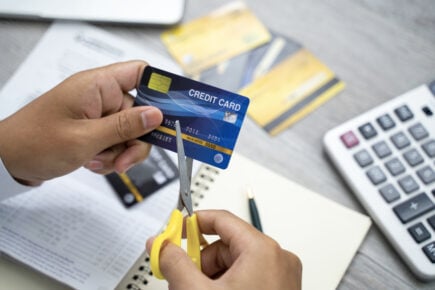Teaching your kids about money in an increasingly cashless society could appear tricky.
The pounds and pence in their piggy bank aren’t much help if everything they want is online.
That’s where kids’ prepaid cards and apps come in. They are like children’s bank accounts with training wheels on.
Prepaid cards for kids are a relatively recent phenomenon, and can act as a fantastic stepping stone between giving your child cash pocket money and opening a children’s current account. It means they are potentially perfect for younger children who aren’t quite ready for the responsibilities of their own bank account.
Essentially, they act as a pocket money card, allowing you as the parent to set the rules of your child’s spending while still starting to build the financial skills they will need as an adult.
Read on to discover how prepaid cards for kids work, how they differ from kids’ debit cards, and how to go about choosing the right one for your family.
How to choose between prepaid cards for kids
Almost every iteration of a kids’ prepaid card sees the parent load up the card, via its connected app, with their chosen amount of money.
In this sense, they’re a bit like pay-as-you-go mobile phone credit or energy meters. The child will only be able to use the amount of money the parent has allocated them, and no more.
But depending on the needs of your child, what else you want from a prepaid card is potentially going to differ dramatically from what another parent might be looking for.
With that in mind, these are some of the most important factors to consider when picking between prepaid cards for kids.
Mobile apps
Prepaid cards for kids normally come paired with mobile apps: one for the parent, one for the child.
Parents can monitor and control their child’s spending from their account, while kids can check their balance and previous transactions on their own app. Which extra features these apps have, for example the ability to reward chores, can help inform the card you go for.
Parental control
Parents can set limits related to how much money their child can spend, where that money can be spent, and even when in the week the card can be used. They can also block and unblock the card when needed.
Prepaid cards and their connected apps will often also have a function where you are notified when your child uses their card in real-time.
The extent to which you are looking for control over your child’s spending, and the level of customisation you are after, is a useful way to measure one prepaid card against another.
Automated transfers
If you want to replicate your child’s weekly pocket money routine, you can set up automated transfers to their prepaid card.
Otherwise, you can make one-off transfers whenever they need a top-up.
Shops, ATMs and online stores
Parents can customise where their child’s prepaid card can be used. If you want them to be able to use their card in-store, at ATMs and online, you can.
Similarly, if you want to prevent them from using any of those methods – especially if you feel uneasy about them spending online – you can do that too. You can even choose to limit spending to the weekend only.
They will also automatically block transactions to sites that are for over-18s only, such as gambling and adult content.
Budgeting and money management
One of the biggest benefits of kids’ prepaid cards is the number of different budgeting options they allow to help teach children about managing their money.
These can include:
- Setting savings goals and targets for your kids to track and work towards in their app.
- Different savings jars and pots for different purposes, teaching children about planning their finances.
- Chore trackers, where some apps allow you to create and track chores for your kids, to be rewarded with pocket money.
Some of these features are going to be more important to you than others, but not all will be available on each prepaid card for kids. You should carefully compare the budgeting options available before applying for your chosen card.
What’s the difference between prepaid cards and debit cards?
Although prepaid cards for kids are also often called prepaid kids’ debit cards, there are some notable differences between how prepaid cards and debit cards work.
Level of control
With kids’ debit cards and children’s bank accounts, the child is in control. The account will be in their name, and offer most of the features of an ‘adult’ bank account, minus overdraft and credit facilities. That means to track the spending on a kids’ debit card, you would need to log into their online bank account.
Prepaid cards, on the other hand, will give you far greater control over your child’s spending and saving. You are in charge of the account, and have an app that can monitor and block their purchases.
Cost
Most prepaid cards will require you to pay a monthly or yearly subscription fee, though free cards do exist.
This is not the case for kids’ debit cards, which tend to come free with a children’s current account.
Age requirements
Kids’ prepaid cards can be used by children from as young as six years old.
Children’s current accounts, and therefore kids’ debit cards, are normally only available for those 11 and older.
» MORE: Kids’ debit cards: everything you need to know
How to apply for a kids’ prepaid card
Applying for a prepaid card for kids is very simple. Some providers, such as HyperJar, require you to first download the app and apply from there, while others, such as GoHenry, Rooster Money and Nimbl, allow you to apply online.
You will usually be asked to submit your child’s name and date of birth, and your own name and date of birth. You will also need to provide the address you want your prepaid card delivered to.
Once your card has arrived, you will need to activate it, either online or using your mobile app. Some providers may ask you to make a minimum deposit to activate the card.
Then you are all set to create the parameters of your child’s account, from spending limits to savings targets and more.
» MORE: Top 10 finance apps for children
Image source: Getty Images
Dive even deeper

What is a Credit Card?
If used correctly, a credit card can be a convenient way to borrow money to pay for goods and services. There are several different types available, including balance transfer cards and credit cards for bad credit, which is why it makes sense to shop around to find the one that’s right for you.

3 Reasons to Cut Up Your Credit Card and 3 Reasons to Keep It
Cancelling your credit card may seem the obvious next step if you’ve managed to pay off your balance in full. But there are several factors you need to consider before deciding whether to get rid of your card, including the effect it could have on your credit history.

Stoozing: Free Cash or Debt Trap?
Stoozing is a way of using a 0% interest credit card to allow you to maximise the money you can make on your savings. But there are risks involved with this money hack, so is it worth trying?

